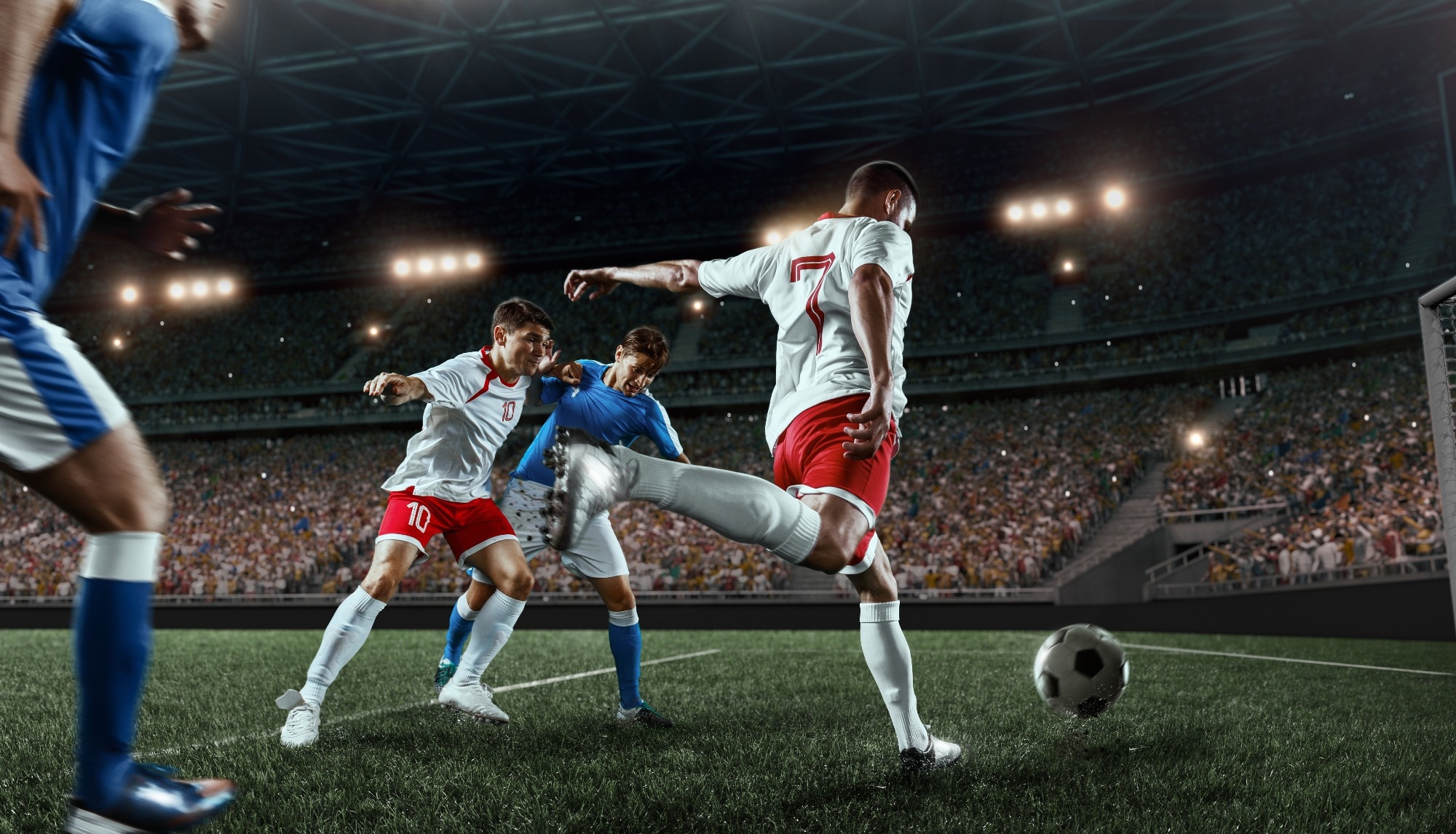An article published in the journal Nature explores an enhanced Swin Transformer-based framework proposed to accurately reidentify soccer players from images captured across different cameras during a match. The method addresses critical challenges that impede player reidentification, like team uniform similarities, frequent occlusion, motion blur, and limited training data availability.
 Study: "SoccerNet Transformer": Better Soccer Player Reidentification with Enhanced Swin Transformer Framework. Image credit: Alex Kravtsov/Shutterstock
Study: "SoccerNet Transformer": Better Soccer Player Reidentification with Enhanced Swin Transformer Framework. Image credit: Alex Kravtsov/Shutterstock
By integrating the capabilities of Swin Transformers and custom enhancement blocks tailored for player images, the approach shows state-of-the-art performance on benchmark datasets, outperforming prior convolutional and transformer models.
Player Reidentification and its Importance
The automated analysis of player movements, statistics, and highlights during matches has vast untapped potential to revolutionize coaching, fan engagement, and match officiation. However, the ability to reliably track and reidentify players across time is fundamental to richer analysis despite numerous visual challenges.
For instance, generating a highlight reel for a specific player requires identifying that player accurately from varied cameras so their actions can be stitched together. Effective reidentification also opens up possibilities for advanced analytics by connecting player identity with movement trajectories and events. Referee decision aids can similarly benefit from understanding player identities and tracking history involved in dubious situations.
While past works have used face recognition, the approach often fails for small, occluded, or blurred faces in expansive views. Reading jersey numbers seems promising since they stand out clearly at the player's back. However, issues like number distortions due to body tilting or overlapping graphics continue to plague robustness. The biggest challenge arises from teams having the same uniforms, causing players to appear nearly identical to algorithms. Variations in poses, camera movement, and shooting angles further complicate matters.
Significant room for innovation exists in developing player reidentification algorithms that can overcome these challenges to enable breakthroughs in match analysis applications. Progress in this area has been limited, especially within soccer contexts, presenting rich research potential.
Details of the Proposed Methodology
The proposed framework rests on a Swin Transformer backbone network for effectively extracting semantic features from input player images while modeling dependencies between them, unlike convolutional neural networks (CNNs).
Swin Transformer is a hierarchical vision transformer incorporating benefits from convolutional networks using shifted windows. Building on this, two additional components customize and enhance the capability for player images.
First, regional feature extraction blocks precede the Swin Transformer layers to emphasize fine details in local player regions, which are especially vital in differentiating identities. This block first projects the features into a spatial map, applies dilated convolutions to widen receptive fields and then feeds into the Swin Transformer flow.
Second, training utilizes a composite loss function by aggregating cross-entropy loss for classification accuracy, triplet loss to constrain feature distances based on identities, and focal loss to reweight easy and hard examples addressing data imbalance. Considered together, the components improve discrimination and generalization.
Evaluation employs the SoccerNet-v3 and Market-1501 person reidentification datasets containing thousands of annotated player bounding boxes and identities across matches and settings. Additional use of re-ranking optimization during inference further improves accuracy by globally adjusting initial predictions.
Competitive Benchmark Performance
The proposed framework demonstrates state-of-the-art performance on both person reidentification and specialized soccer player benchmarks, analyzed below:
- The Market-1501 person reID dataset comprises over 30,000 images of 1500 identities from 6 cameras. On this benchmark, the proposed method achieves top-ranking accuracy, with a 96.2% rank-1 score and 89.1% mAP, outperforming sophisticated CNN techniques like multi-granularity network (MGN), attentive but fiverse person re-identification (ABD-Net), and transformer schemes.
Specifically, the rank-1 score sees a 1.1% absolute improvement over the prior best, which is significant for actual deployments. The mAP metric that evaluates cumulatively across ranks exhibits over 2% enhancement. This showcases the ability to reidentify persons correctly and reliably on top retrievals.
- SoccerNet-v3 comprises over 330,000 soccer player bounding boxes spanning thousands of identities derived from actual match videos. This domain-specific benchmark offers a challenging testbed for soccer-centric models.
The proposed approach also delivers compelling gains with 84.1% rank-1 accuracy and 86.7% mAP over current art like self-supervised pre-training for transformer-based person reidentification (TransReID-SSL), indicating robustness to complex scenarios of occlusions and motion blur. The additional regional blocks provide heightened localization while loss functions handle data distortions.
In combination, the evaluations powerfully demonstrate the effectiveness of the transformer-driven methodology for pushing the state-of-the-art in not just generic person reID tasks but also within niche soccer analytics applications involving player tracking.
Future Outlook
While the results are promising, there remains significant scope for continued innovations within soccer-centric reidentification techniques to address limitations:
- A player's appearance varies drastically across camera angles and proximities to the cameras, resulting in distorted scales. Directly enhancing models to account for perspective changes can be highly beneficial. This allows correctly relating identities even in distant views. Techniques like spatial transformers show early potential here.
- Transformers entail heavy computation during training and inference. Reducing costs through distillation, quantization, and efficient attention is vital for deploying onto embedded devices needed for analytics like referee aids. Specialized hardware accelerators also offer promise.
- Unlike typical person reID, soccer scenarios offer rich contextual cues like team strategies, player roles, and match situations that can inform likely player locations and appearances. Incorporating these high-level contextual priors during modeling can significantly reduce ambiguities.
- Larger datasets covering various environmental conditions, opponent teams, player fitness levels, etc., will encourage model generalization. Synthetic data augmentation can alleviate annotation costs here to diversify training distributions.
In summary, while the current work pushes performance boundaries, the techniques still must be solved. Building contextual and relational understanding alongside visual recognition provides a rich avenue for future soccer analytics research with huge application prospects. Competitions like the SoccerNet challenge will hopefully spur innovations in this direction.